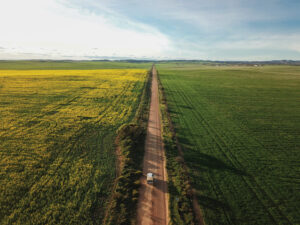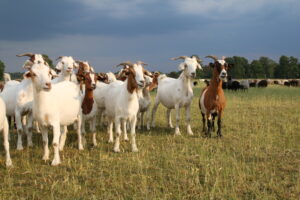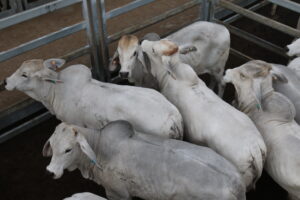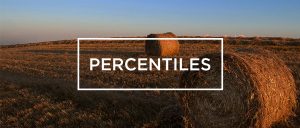It is some seven years since Mecardo looked at commodity price volatility across a wide spectrum of commodities, beyond apparel fibres and those commodities produced on extensive Australian farms.
Price volatility can be measured in a number of ways. For the purposes of this article price data in Australian dollar terms from the past 5 years has been used, with the range in price between the 25th and 75th percentile for that period expressed as a percentage of the average price for the 5 years. The objective is to compare price volatility between commodities and also to look at how price volatility varies across time for individual commodities.
Figure 1 compares the price volatility between a range of extensively grown commodities (plus cotton) for the past five years. The trade lamb, wheat, and canola come in with the lowest volatilities and at the other end lamb skins is the clearest winner in terms of the highest volatility, followed closely by crossbred wool (the 28 MPG) and then the Eastern Young Cattle Indicator (EYCI). Merino wool prices are in the middle, along with cow, mutton, and cotton.
For the bigger picture commodity prices from the World Bank https://www.worldbank.org/en/research/commodity-markets are augmented with local Australian price series and some other apparel fibre series (such as the South African 19 and 21-micron prices). The lamb skins series from Figure 1 is not included; otherwise, it would have the highest volatility. Instead, the natural gas index has the highest volatility, closely followed by the 28 MPG, then coal and fertilisers, the EYCI and the 30 MPG. At the other end of the spectrum, trade lamb is in the lowest section of price volatility. The key Australian commodities are highlighted and they are spread across the whole length of the volatility spectrum. The message here is that there is nothing inherently excess in the price volatilities for commodities produced on Australian farms.
The analysis so far is simply a snapshot of price volatility for the past five years. Figure 3, using the same method of measuring price risk, looks at the rolling five-year price risk from the early 1980s for four key farm commodities – wool, beef, lamb, and wheat. The wheat series only starts in the mid-1990s when 5 years of domestic price data become available to allow the calculations to work. It is a messy graphic, which tells us that price volatilities vary with time. The trade steer price volatility has tended to be the lowest, although the high level in the early 1980s is the tail end of massive price volatility in the 1970s. By this measure of volatility, different commodities rotate through having high to low levels in relation to the other commodities.
What does it mean?
Price volatilities for commodities vary with time, and the relative volatilities between commodities also vary with time. Motherhood statements about price risk stemming from price volatility should be treated with great caution. For farmers, price volatility is bad when costs rise, fertiliser for example, but good when they fall. It is the opposite case for commodities sold to generate income. So, all price volatility is not bad, which complicates the picture.
Have any questions or comments?
Key Points
- In terms of commodity price volatility, locally produced agricultural commodities are not more inherently volatile than commodities generally.
- Price volatility for individual commodities varies through time.
- The relative level of price volatility between commodities produced on farms in Australia also varies over time.
Click on figure to expand
Click on figure to expand
Click on figure to expand
Data sources: AWEX, MLA, AWF, Profarmer, Olam, Louis Dreyfus, Emerging Textiles, World Bank, RBA, ICS Mecardo















